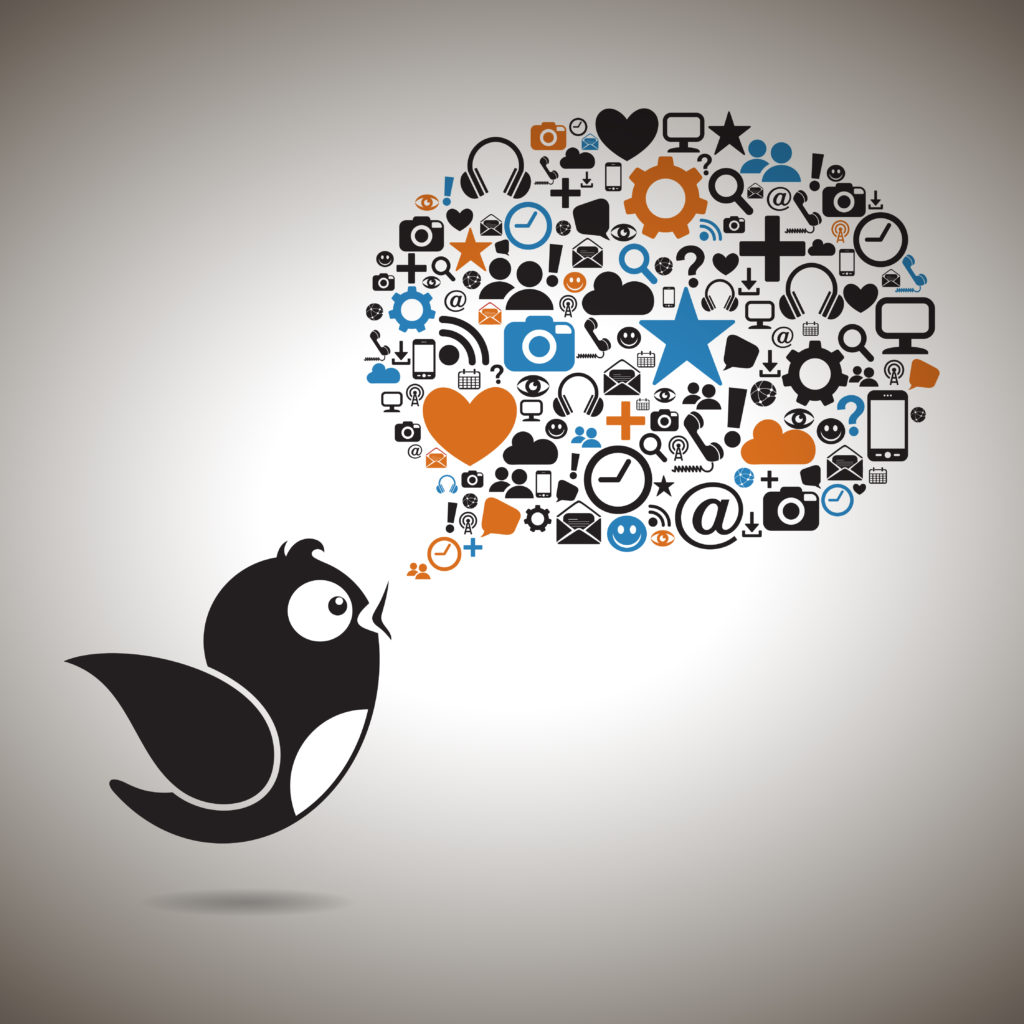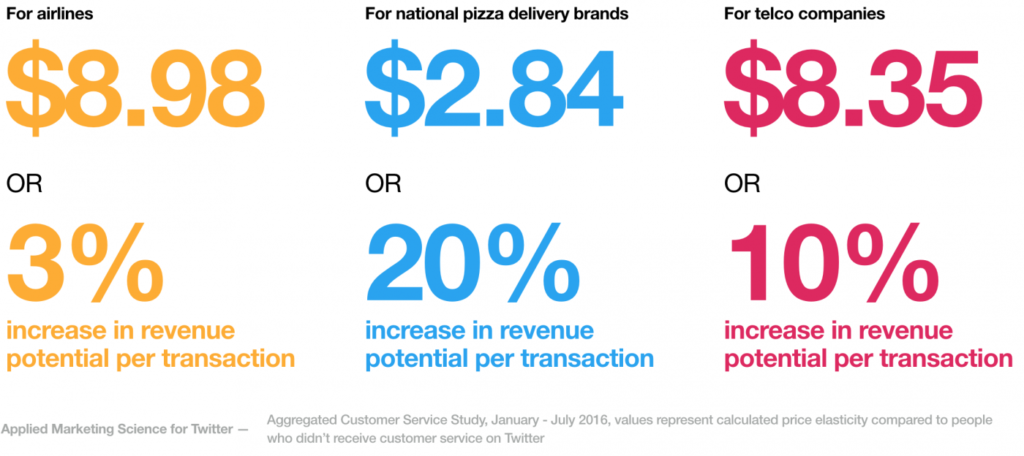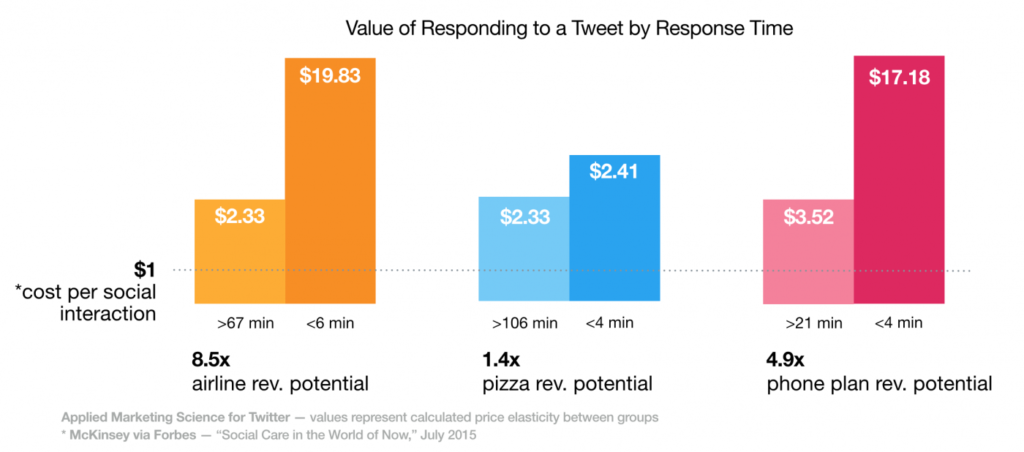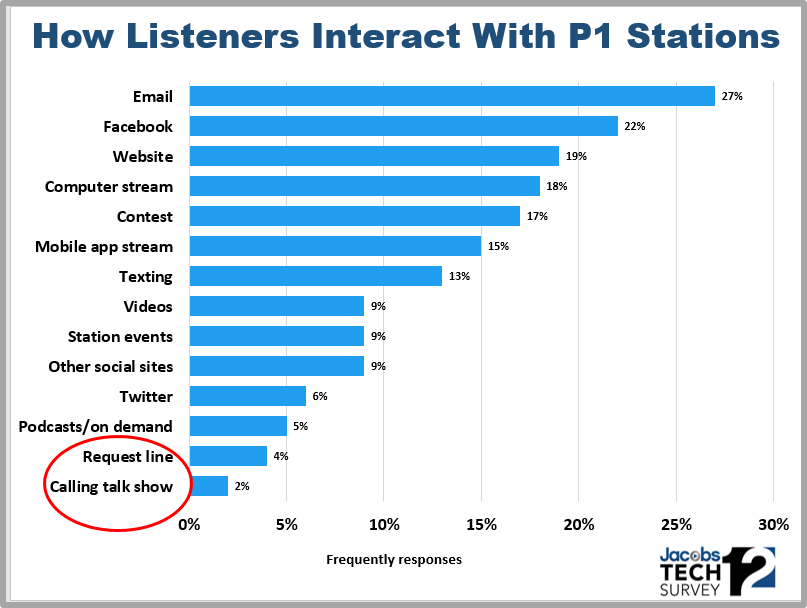
Since the advent of Twitter, I’ve come to believe it has been beneficial for many radio programmers and personalities. While there’s talk of expanding the 140 character rule, the fact is that Twitter has taught many of us how to communicate using shorter, more efficient words and thoughts. In a PPM world, learning how to say more in less time (and space) is a bona fide skill.
Say what you will about Donald Trump’s tweeting. He is the master of squeezing in a great deal of content within Twitter’s stringent boundary lines. His tweets often feel like they’re over the limit because he communicates a great deal of emotion within Twitter’s stringent limits.
But there’s another side to Twitter that can help radio connect with its listeners – and that’s in the area of customer service. Twitter has recently released its own study that makes the connection between service, loyalty, and satisfaction.
Radio would do well to pay attention to Twitter’s research because it underscores how the personal touches of both acknowledgment and responsiveness translate into qualities the industry so dearly needs. In a competitive environment that now includes Pandora, SiriusXM, and others, connecting with customers and providing great service are assets that local radio can use to differentiate itself from its digital predators.
To make its point, Twitter used airlines, national pizza delivery brands, and telco companies as benchmarks. Their data show that when customers are acknowledged, their willingness to spend more money on a product or service demonstrably rises:

Twitter’s research team also notes that a one-to-one private response (in their world, a Direct Message with someone who has reached out) leads directly to word-of-mouth sharing and consumer recommendation – two assets that are critically important to any brand – especially radio.
If you’ve ever complained on Twitter to an airline, a car rental agency, or any B-to-C company, you know how gratifying it feels to merit a response that solves your problem. And it can abosolutely change your view of a brand.
But it’s not just about connecting and acknolwedging – response time matters, too. The Internet world – fueled by the instantaneous nature of smartphones – has amped up consumer expectations of how quickly a brand reacts to a concern or question. The value to the same three industries is stunning, illustrating the importance of addressing a problem, complaint, or query in short order:
 These are impressive differences to be sure, but note that the responses that move the needle all occur within 10 minutes of a consumer posting a tweet. A speedy reaction to a question or complaint is the difference-maker in building brand loyalty and respect.
These are impressive differences to be sure, but note that the responses that move the needle all occur within 10 minutes of a consumer posting a tweet. A speedy reaction to a question or complaint is the difference-maker in building brand loyalty and respect.
How many radio stations have a system or policy in place that addresses customer service issues? And doesn’t it stand to reason that a company that places a high priority on acknowledgment and response time stands to benefit exponentially?
It requires a policy, staff training, and vigilance to ensure that systems are working efficiently, and that customers (in radio’s case, listeners and advertisers) are being served on an effective and timely basis.
It also starts with knowledge. Do you know how your audience interacts most frequently with your station(s)? This has become a regular question in our Techsurveys. Below is the hierarchy:

For the entire sample, email and Facebook lead the way in audience connectivity. And look what’s at the bottom of the list: using a phone to call the station. Ironically, when most people reading this blog got into radio, calling a station was very likely the most frequent touch point. Today, it’s at the very bottom of listener connection options.
Of course, your station’s specific result will vary, depending on your format, your connectivity track record, and the nature of your discreet audience. But this type of data can help stations (and companies) set standards and goals to ensure that fans are being acknowledged in a reasonable amount of time.
And you can conduct some of the “research” yourself. Without trolling your staff, it’s not hard to measure how a station performs. Simply calling the front desk or the air studio tells you part of the story. An email to the program director, GSM, or traffic director can be telling as well. And then there’s the social piece of the puzzle – do comments, posts, and “likes” earn a station response? And how long does that process take?
The Twitter study is important in pure dollars and cents terms. In broadcasting, the currency is a little different. For commercial radio, it’s always been about ratings and ad sales. In public radio where ratings and underwriting are also key, it’s membership and donations that matter. In both cases, service and responsiveness are the new currency that can drive positive results.
Whether you’re chasing meters, diaries, ad sales, or sustaining members, Twitter’s study suggests how customer service is a quantifiable benefit. And that’s an important motivator in setting measurable customer service goals and systems.
But it’s the emotional response from fans and casual listeners alike that can truly move the needle. Contrast a bad customer service episode with an airline, cable company, or other business with one that pleasantly surprised you because it was responsive and effective. It can change your entire outlook about a brand. And chances are in either case, you’ll most definitely tell others – in person and socially.
We have made this commitment at our mobile app development company, jacapps, because software companies are notoriously difficult to connect with. And we’re seeing the difference every week, with new customers, as well as existing customers. Response, service, and timeliness all matter.
For radio, it could be the new black. And something to strongly consider as goals are being set for the new year.
To learn about what moves the needle with your station’s fans, look into Techsurvey13 here.
- What Is It With Female Robot DJs? - April 30, 2025
- Why “Dance With Those Who Brung You” Should Be Radio’s Operating Philosophy In 2025 - April 29, 2025
- The Exponential Value of Nurturing Radio Superfans - April 28, 2025




Leave a Reply